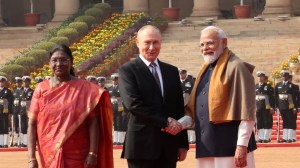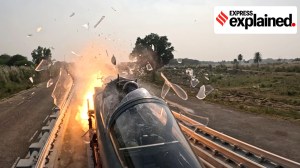The life and science of Thomas Kailath
Professor at Stanford for over half a century,Thomas Kailath is no stranger to awards and recognition. But the Padma Bhushan is special. He spoke to our correspondent
He has done pathbreaking work in signal processing and other areas of electrical engineering. Professor at Stanford for over half a century,Thomas Kailath is no stranger to awards and recognition. But the Padma Bhushan is special. He spoke to our correspondent after receiving the honour
Not many people in India would have heard of Professor Thomas Kailath,a mathematician and electrical engineer,who has been teaching at Stanford University for more than five decades now. However,a quick Google search will tell you he is one of the most highly decorated Indian scientists in recent times. The first India-born student to earn a PhD in electrical engineering from MIT,Kailath has had a glorious scientific career,duly recognised by a string of prestigious awards.
The Institute of Electrical and Electronics Engineers (IEEE),the topmost professional body in the field,presented him with its highest award,the Medal of Honour,in 2007 for his exceptional development of powerful algorithms in the field of communications,computing,control and signal processing. And the Institute for Scientific Information (ISI) has put him in Nobel Class for his contributions in mathematics and engineering.
It was only fitting that the Government of India bestowed on him the Padma Bhushan this year in recognition of his achievements in science and engineering. Kailath was one of the three NRI/PIOs to have been honoured with the award this year.
A gentle and good-natured man,Kailath says the Padma Bhushan came as a surprise. There can be nothing more satisfying than being honoured by your own country. I owe all my achievements to the education I had in Pune and to my teachers and family. Perhaps I was able to contribute a little bit to the development of science and technology in India, he says. He was associated with developing indigenous radar technology for defence use in the Himalayan region. He was also instrumental in setting up a government scholarship for students at IITs.
He is a little disappointed with the fact that government policies have not led to the development of high technology in India. The kind of technological branding that countries like Israel,South Korea or China have been able to create globally,we have not been able to,though we had the capability, he says. There are big opportunities in wireless technology,for example,where Indian scientists and entrepreneurs are doing commendable work. Unfortunately,as of now,it is only helping other countries, Kailath says,referring to an area where he pioneered research in algorithms and information theory.
Kailath has also been associated with a number of entrepreneurial adventures,including Numerical Technologies,which went public within five years of being founded. He says the entrepreneurial drive was also something that was lacking in India,especially in the universities. Some of the best-known companies,like Yahoo,Google,Sun Microsystems or Cisco,have come out of spin-offs from universities. We need something like that to start happening in India too.
For someone who has reached towering heights in his profession,Kailath says mathematics happened to him only by chance,thanks to a school teacher who made the subject interesting to him. I have always been more interested in the applications of science. Mathematics connects very well with applications. Once I realised this,I took a natural liking for it.
His only regret is that his wife Sarah,who passed away last October,was not there to see him receive the Padma Bhushan. She knew that I had been nominated. So it is a little sad that she is not present.
- 01
- 02
- 03
- 04
- 05































